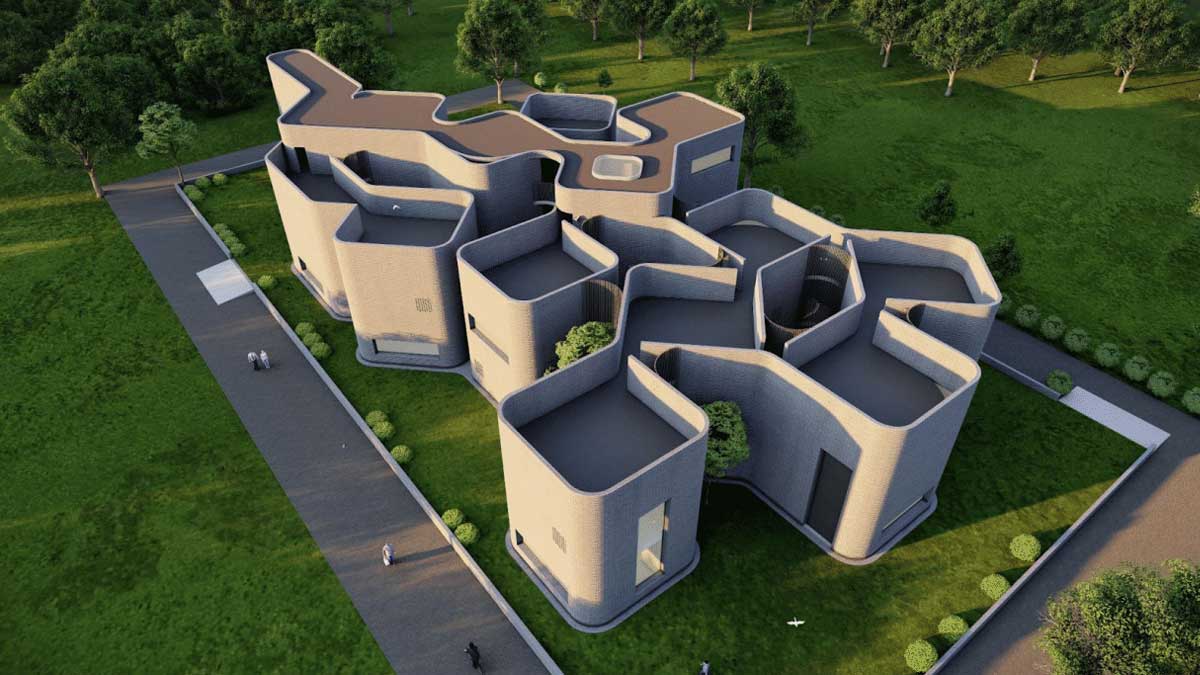The spaces we inhabit contribute greatly to moulding our behavioural tendencies. Which, in the case of younger minds, is only more impacting. Moreover, schools and places of education become one of the primary interactions of children with our society due to the amount of time they spend in these spaces. Architects and designers must bear in mind the impact of the spaces they build on their well - being and growth. The space of learning must not be an overwhelming set of vast, daunting structures. Instead, in viting spaces must be generated by scaling down the built proportions such that conducive environments that allow free thinking and self - expression are created.
In the pandemic - recovered world, it is abundantly clear that students learn from their environ ment rather than merely through blackboard lessons. True learning happens beyond classrooms — in the intermediary spaces and outdoor pockets, courtyards or interactive nodes. Ideally, along with the green pockets, schools must also incorporate sustainable bu ilding techniques and micro - environments that are not dependent on mechanical air conditioning. This way, the school can become a thriving and thermally comfortable environment with abundant green spaces that surround the spaces of learning.
The finer an d often overlooked factors like the lighting, shadows, colours and textures hold as much importance as the overarching design principles. For instance, studies have proven that incorporating bright colours in the kids’ immediate learning environment and ex posure to variations in patterns of light and shadows help stimulate their mental development. A learning to come out of this is that the children are quite receptive to different textures, and designers could use this as their starting point. One of these ways could be playing around with surfaces and textures, like that of a mud floor instead of the conventional cement or tile flooring — keeping children in direct contact with nature while passively cooling the room.
Today, we are required to be more consc ious of creating a fairly homogenous relationship between the school classrooms and the outdoors. This idea was liberally explored in the schools we designed in some of Haryana's most underdeveloped, remote villages. For instance, the built form of the Aar ohi Model School consists of four wings arranged in the layout of a swastika motif, generating four courtyards within the campus and allowing each classroom to open directly to the outdoors in more than one direction. This module was exacted in over twelve different villages in the state.
Treading on similar ideals was a school we design ed in the dense semi - urban fabric of the Mandi Gobindgarh district, Punjab, where, the entire built mass was broken down into several smaller cuboidal units, each directly opening into courtyards from all four directions.


Factoring in these notions, the impact of architecture becomes crucial in the developmental stages of a child’s life, and we, as designers , are responsible for encouraging their growth and enabling them to create sustainable futures. Pedagogy alone is not the defining standard that shapes these young thinkers. Immediate environments and nature contribute equally if not more to create safe and fruitful spaces for kids’ early developmental years. In the best of worlds, the ideal classroom is the one without walls and under a tree!